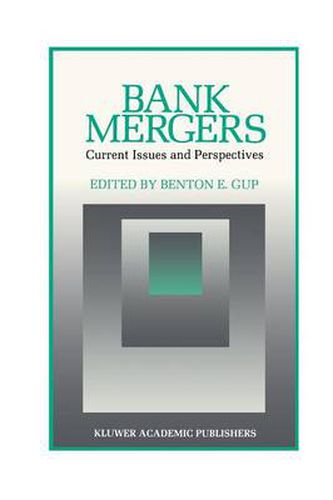Readings Newsletter
Become a Readings Member to make your shopping experience even easier.
Sign in or sign up for free!
You’re not far away from qualifying for FREE standard shipping within Australia
You’ve qualified for FREE standard shipping within Australia
The cart is loading…






This title is printed to order. This book may have been self-published. If so, we cannot guarantee the quality of the content. In the main most books will have gone through the editing process however some may not. We therefore suggest that you be aware of this before ordering this book. If in doubt check either the author or publisher’s details as we are unable to accept any returns unless they are faulty. Please contact us if you have any questions.
Historians of our financial system will record this as an age of deregulation and bank mergers. Deregulation, a cornerstone of President Reagan’s Administration, resulted in federal and state legislation that contributed to increased competition for financial services and increased merger activity. During the 1981-1986 period, there were 2,139 mergers in banking and finance, accounting for 16 percent of total merger activity.l More mergers occurred in banking and finance than in any other industry. Because of these bank mergers, there are vast amounts of data avail able for scholarly research. This book presents some results of that research which will be of interest to academics, bankers, investors, legislators, and regulators. The book consists of ten articles, and it is divided into three parts. Part 1: National and Regional Bank Mergers gives a broad perspective of merger activity. The first article by Peter S. Rose compared the growth of bank holding companies that merged with those that did not merge. One conclusion of his study was that banks planning mergers tended to be aggressively managed and were often beset by problems, such as low profitability or declining loan quality. Mergers were one solution to their problems. But he found no solid evidence that mergers resulted in greater profitability or reduced risk. He also observed that acquiring banks did not seem to grow faster than those choosing not to merge.
$9.00 standard shipping within Australia
FREE standard shipping within Australia for orders over $100.00
Express & International shipping calculated at checkout
This title is printed to order. This book may have been self-published. If so, we cannot guarantee the quality of the content. In the main most books will have gone through the editing process however some may not. We therefore suggest that you be aware of this before ordering this book. If in doubt check either the author or publisher’s details as we are unable to accept any returns unless they are faulty. Please contact us if you have any questions.
Historians of our financial system will record this as an age of deregulation and bank mergers. Deregulation, a cornerstone of President Reagan’s Administration, resulted in federal and state legislation that contributed to increased competition for financial services and increased merger activity. During the 1981-1986 period, there were 2,139 mergers in banking and finance, accounting for 16 percent of total merger activity.l More mergers occurred in banking and finance than in any other industry. Because of these bank mergers, there are vast amounts of data avail able for scholarly research. This book presents some results of that research which will be of interest to academics, bankers, investors, legislators, and regulators. The book consists of ten articles, and it is divided into three parts. Part 1: National and Regional Bank Mergers gives a broad perspective of merger activity. The first article by Peter S. Rose compared the growth of bank holding companies that merged with those that did not merge. One conclusion of his study was that banks planning mergers tended to be aggressively managed and were often beset by problems, such as low profitability or declining loan quality. Mergers were one solution to their problems. But he found no solid evidence that mergers resulted in greater profitability or reduced risk. He also observed that acquiring banks did not seem to grow faster than those choosing not to merge.